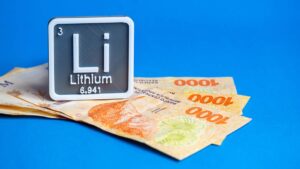Have pathfinders shown Galan the way to Greenbushes-like geology?

Pic: Schroptschop / E+ via Getty Images
Could the same geological structure that underpins the world class Greenbushes Lithium Mine extend onto the ground held nearby by junior Galan Lithium (ASX: GLN)?
That is the intriguing finding the lithium explorer is working off at its 80%-owned Greenbushes South project, where soil and rock chip samples have shown up pathfinder elements associated with the Greenbushes operation’s rich lithium-tantalum-tin pegmatites.
That includes arsenic concentrations of up to 574 parts per million, antimony of up to 16ppm and up to 12ppm of tin – the original commodity mined at Greenbushes before the emergence of a global lithium market in the 1980s.
Samples from previously mapped pegmatites returned concentrations of up to 27ppm tin, providing Galan with confidence the Donnybrook-Bridgetown Shear Zone and its geochemical footprint continue south along strike into Galan’s project area.
The company says the findings augur well for future programs to uncover blind pegmatites along the shear zone, with plans to complete more soil and rock chip samples under way.
A CSIRO study, undertaken before the Greenbushes mine commenced production, confirmed that ‘Greenbushes South’ has the potential to host a large lithium discovery.
But the current field work program is the first step to confirming so-called ‘pathfinders’ at the project.
Greenbushes acquisition adds to brine development
The world leading Greenbushes is owned by Chinese and American lithium chemicals giants Tianqi and Albemarle, with nickel miner IGO currently buying into just shy of half of Tianqi’s interest in a +$1b deal.
Known for its remarkable high grades, it is the world’s largest hard rock lithium mine but remains an outlier with few if any serious mining operations in the vicinity.
That new deposits have yet to be found in the region has opened the door for junior players like Galan and 20% partner Lithium Australia – which vended Greenbushes South to Galan in January.
Galan has taken a systematic approach to exploration at Greenbushes South, starting just 3km from the Greenbushes open pit.
The acquisition gave Galan an impressive package of almost 400km2 to explore in a region that remains incredibly underexplored.
Galan, which had a war chest of around $15 million as of March 31, is leveraged to both the brine and hard rock lithium markets.
It is currently progressing its flagship Hombre Muerto West (HMW) project in Argentina’s ‘Lithium Triangle’, where it is targeting a long-life 20,000tpa lithium carbonate operation with a potential mine life of over 40 years.
HMW boasts a high-grade lithium resource ~7.5km long, up to ~2.5km wide and 718m deep.
A preliminary economic assessment (PEA) released in December placed HMW in the lowest quartile of lithium carbonate projects for production costs, with a US$1 billion pre-tax net present value and an internal rate of return of 22.8 per cent.
HMW would produce lithium at about US$3518 per tonne – already one of the lowest cash cost points in the industry, against Roskill’s average long-term lithium carbonate price (2020-2040) of US$11,687/t.
This article was developed in collaboration with Galan Lithium, a Stockhead advertiser at the time of publishing.
This article does not constitute financial product advice. You should consider obtaining independent advice before making any financial decisions.
Related Topics

UNLOCK INSIGHTS
Discover the untold stories of emerging ASX stocks.
Daily news and expert analysis, it's free to subscribe.
By proceeding, you confirm you understand that we handle personal information in accordance with our Privacy Policy.








